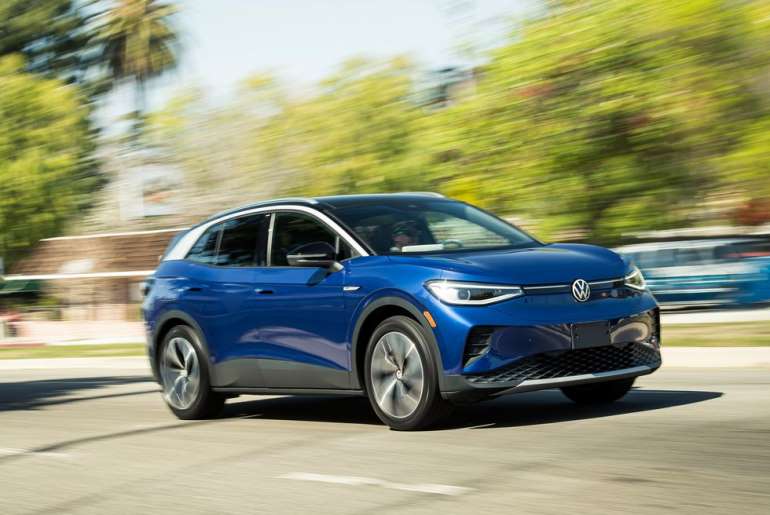VW's electric crossover succeeds at imitating the gas-powered competition but forgoes many of the things we like about EVs.
As electric cars begin to proliferate, we are seeing the auto industry figuring out the best way to build and sell battery-powered cars. Some take existing gasoline models, rip out their powertrains, and bolt in battery packs and electric motors. A few existing carmakers have started new EV-only brands to market purpose-built electrics. One brand is courting the attention and controversy that comes from putting a famous pony-car nameplate on an electric car. And then there are the startups whose big promises are only outdone by the cultlike devotion of their fans. Against this backdrop, VW's approach for the new ID.4 looks extremely logical and straightforward. The 2021 ID.4 is designed and engineered to be an electric crossover that matches the specifications, performance, and character of the best-selling gas vehicles in the United States: compact SUVs such as the Toyota RAV4 and Honda CR-V.
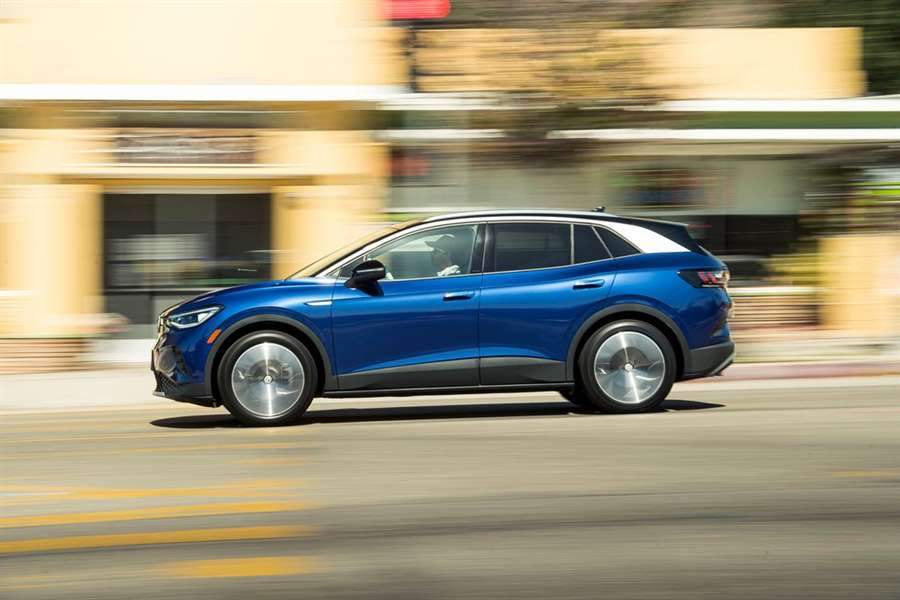
Built on the VW Group's new MEB modular EV platform, the ID.4 has a 77.0-kWh lithium-ion battery pack under the floor and a 201-hp electric motor on the rear axle. While this layout is unusual for the compact crossover-SUV segment, the ID.4's dimensions make it a lot like the rest of the class. The VW's wheelbase is longer, but its length and width are within fractions of an inch of the RAV4's. The ID.4's design hardly advertises its electricness and isn't any more eye-catching than your average crossover. It's shaped like a two-box blob with conventional-looking headlights and taillights. The only bits of flair are in the grilleless face and the optional contrasting C-pillar trim.
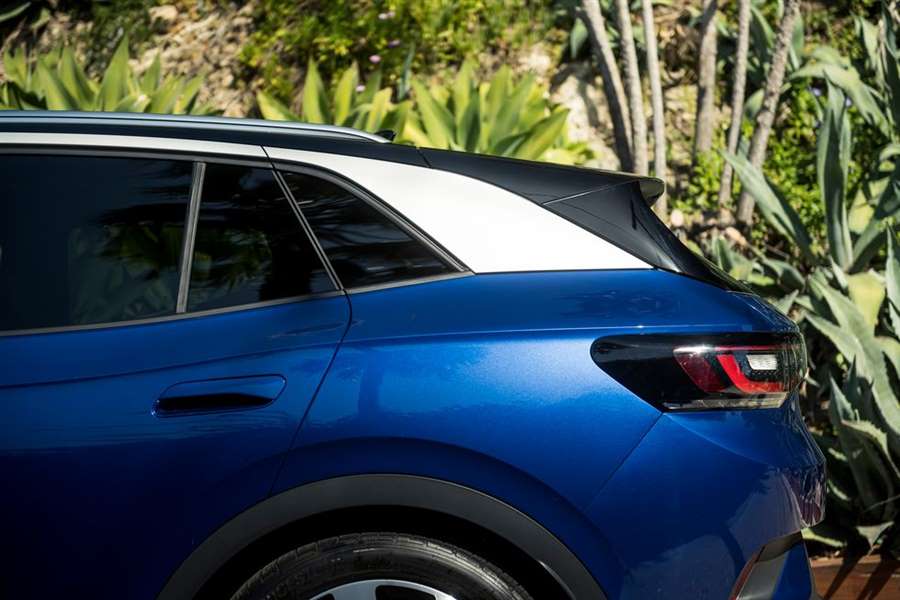
HIGHS: Spacious interior, comfortable ride, quiet at speed.
The ID.4's primary controls are set up to mimic the experience of a gas-powered car. Sit down, turn a knob to put it in Drive, and you won't have to make any adjustments to your driving behavior. Let your foot off the brake and it creeps forward just like a gas car with a torque-converter automatic transmission. Lift off the accelerator and it continues to coast like a gas car with an automatic.
To get more braking from the electric motors requires putting the car into its "B" setting, but even in that mode the regenerative braking effect isn't aggressive enough to reliably slow the car with a lift off the accelerator or to bring the ID.4 to a complete stop. Volkswagen promises one-pedal driving in B mode, but our regular use of the brake pedal had us questioning the brand's definition of the term.
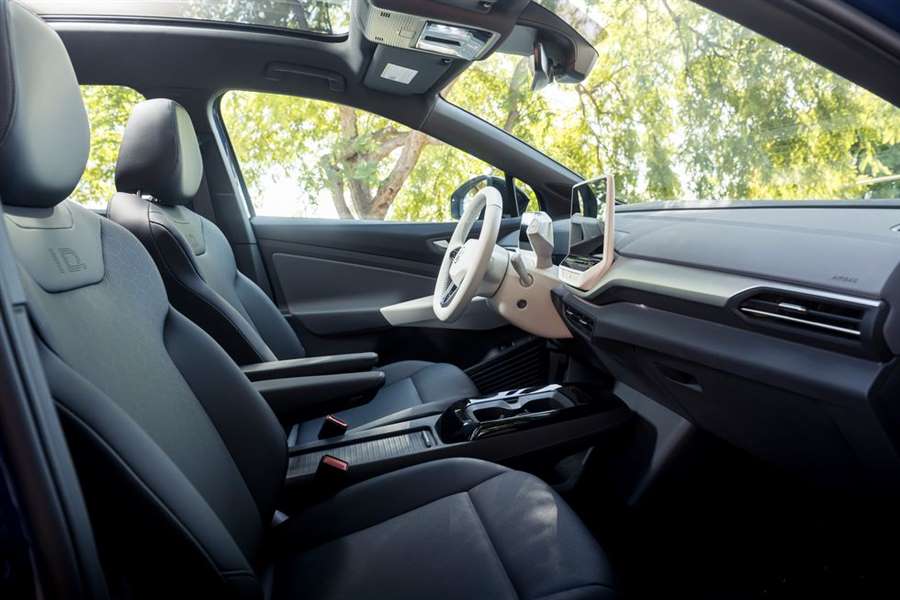
VW also touts ID.4's 201-hp electric motor as having about the same power as the base four-cylinder engines in many compact crossovers. Maybe so, but the ID.4 weighs 4698 pounds. That's a whopping 1000 pounds more than the gas-powered competition. With only 229 pound-feet of torque, the neck-snapping shove of instant torque we like so much in electric cars is largely missing. When merging or passing at highway speeds, the ID.4 feels sluggish. The run to 60 mph takes 7.6 seconds, and the quarter mile is complete in 16.0 seconds at 86 mph, on par with the quicker gasoline models in this segment but significantly slower than similarly sized EVs such as the Ford Mustang Mach-E and Tesla Model Y. A more powerful dual-motor all-wheel-drive version of the ID.4 with around 300 horsepower will be available later this year and will likely bring the ID.4 closer to the snappy acceleration of other EVs.
LOWS: Unexciting to drive, anonymous styling, annoying infotainment.
If you are excited about the handling prospects of this rear-drive configuration, don't be. The ride is pleasingly firm and the steering is appropriately weighted, but there's little verve or joy to the driving dynamics. The ID.4 simply goes where it's pointed without complaining, which, to be fair, is what's expected of a small SUV. We recorded 0.85 g of grip on the skidpad and a stopping distance of 166 feet from 70 mph, average numbers for the class.
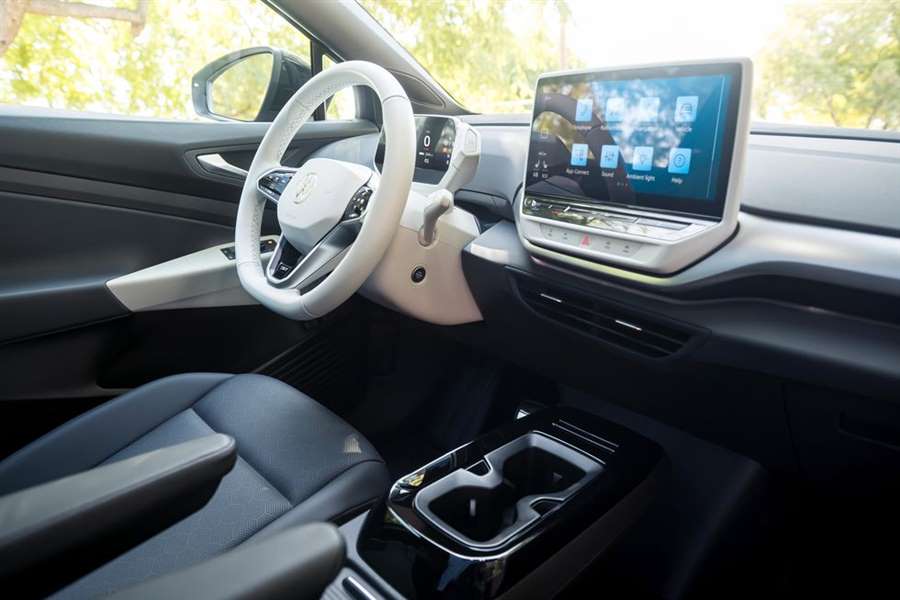
Driving the ID.4 is a largely serene experience. At 70 mph we measured a library-like 68 decibels, and the powertrain remains hushed under acceleration. The interior is airy and spacious, with a low beltline and a generous rear seat. There's no "frunk" as in many other EVs, but the cargo area behind the hatch is big, fitting eight carry-on suitcases with the rear seats up and 26 cases with the seats folded. The front seats are good for hours, and the driving position is natural, with good visibility. Storage cubbies abound, and rear-seat passengers enjoy their own USB ports and air vents.
The least conventional aspect of the ID.4 is the one you'd most hope to follow convention: the user interface. We're not fans of VW's latest infotainment software, which is overly reliant on the 12.0-inch touchscreen and doesn't provide enough physical controls for things you want quick access to such as heated seats and radio tuning. There are touch-sensitive sliders for the climate controls, sunshade, and volume adjustment, and haptic buttons for various menus. Even the few physical controls are strange. There are only two window controls on the driver's door panel, and you must press a finicky haptic switch to activate the rear windows. And the clean look of the white steering wheel isn't going to stay clean for long.
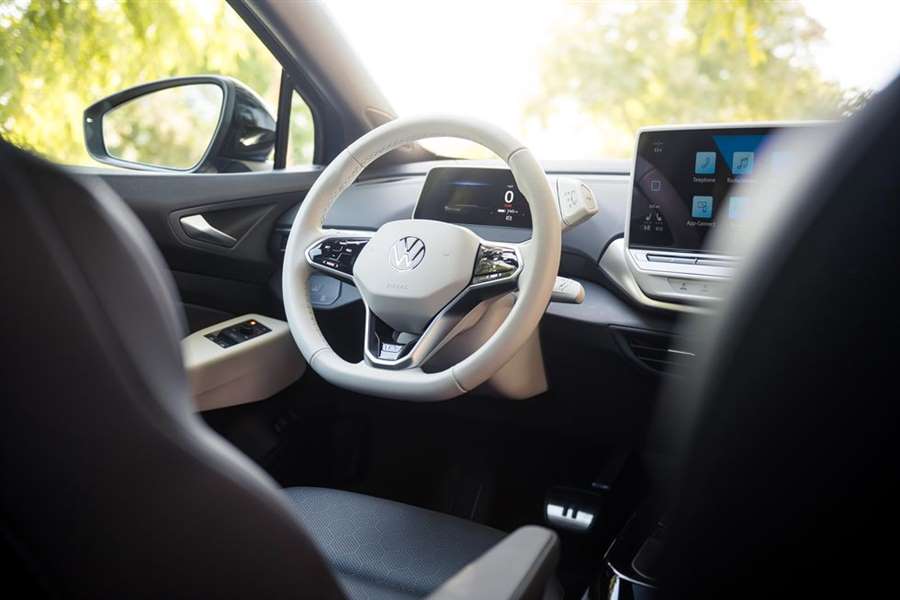
The driving experience in the ID.4 is so normal that it's easy to forget that there's nothing for you at a gas station except Flaming Hot Cheetos. The EPA claims a 250-mile range in combined driving, and we measured 190 miles in our real-world 75-mph highway range test done just above freezing temperatures. (Cold temps negatively impact battery range.) Refilling the VW's battery from empty takes about 7.5 hours on a typical 220V charger, and fast chargers can get you from 5 to 80 percent charge in a claimed 38 minutes. Thanks to Dieselgate, VW is investing heavily in charging infrastructure through its subsidiary, Electrify America. Buyers benefit from the scandal with three years of free charging from Electrify America's fast chargers.
Early adopters of new tech might be disappointed by the ID.4's lack of quirkiness. The ID.4 feels like it's trying to convince buyers that an EV can cost and provide the same experience as mainstream gas-powered vehicles. Pricing starts at $41,190, and our 1st Edition test car stickered for $45,190, which is within reach of loaded gas-powered compact crossovers, especially when you factor in thousands of dollars in federal tax credits.
Rather than an electric vehicle shaped like a compact SUV, this Volkswagen feels like a mainstream crossover that happens to have an electric motor and a battery pack. But the ID.4 lacks any distinct advantages over gas models, and it's missing the cool factor and instant-feeling acceleration of other EVs. VW is so determined to make the ID.4 normal that it seems to have forgotten that EVs can be weird, funky, and fun. The ID.4 is a quiet and comfortable transportation pod that will satisfy buyers looking for a quiet and comfortable transportation pod.

